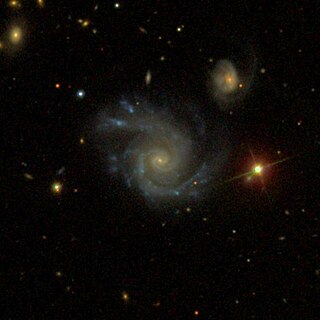
NGC 5829 is a spiral galaxy located in the constellation Boötes. It is 281 million light-years away from Earth and was discovered by astronomer, Edouard Stephan in May 1882.

NGC 7004 is a lenticular galaxy and a type 2 Seyfert galaxy around 330 million light-years away from Earth in the constellation Indus. NGC 7004 has an estimated diameter of 140,000 light-years. NGC 7004 was discovered by astronomer John Herschel on October 2, 1834. NGC 7004 is a member of a group of galaxies known as [T2015] nest 200093. The group contains 12 member galaxies including NGC 7002, has a velocity dispersion of 440 km/s and an estimated mass of 1.28 × 1014M☉. NGC 7004 is also host to a supermassive black hole with an estimated mass of 8.1 × 108M☉.
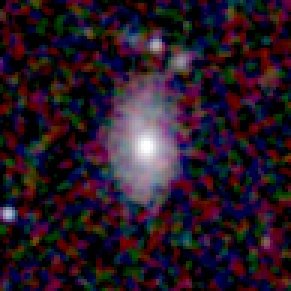
NGC 7301 is a barred spiral galaxy located around 308,000,000 light-years (94,000,000 pc) away from Earth in the constellation Aquarius. It was discovered by American astronomer Francis Preserved Leavenworth In 1886.

NGC 463 is a lenticular galaxy located about 264 million light-years away from Earth in the constellation Pisces. It was discovered by French astronomer Édouard Stephan on December 16, 1871.
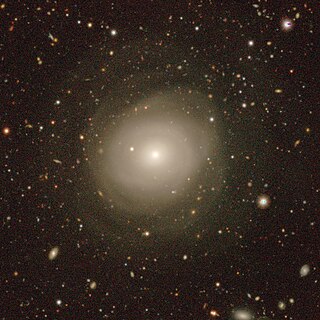
NGC 466 is a lenticular galaxy located about 227 million light-years away from Earth in the constellation Tucana. NGC 466 was discovered by astronomer John Herschel on October 3, 1836.

NGC 491 is a barred spiral galaxy located about 161 million light-years away from Earth, in the constellation Sculptor. NGC 491 was discovered by astronomer John Herschel on September 25, 1834.
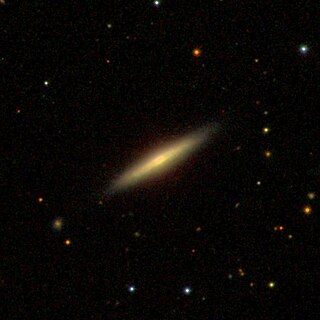
NGC 489 is probably an edge-on spiral galaxy located about 97 million Light-years away from Earth in the constellation Pisces. NGC 489's calculated velocity is 2507 km/s. NGC 489 was discovered by German astronomer Heinrich Louis d'Arrest on December 22, 1862.

NGC 487 is a barred spiral galaxy located about 250 million light-years away from Earth in the constellation Cetus. NGC 487's calculated velocity is 5949 km/s. NGC 487 was discovered by American astronomer Francis Leavenworth on November 28, 1885.

NGC 480 is a spiral galaxy located about 546 million light-years away from Earth in the constellation Cetus. NGC 480 was discovered by American astronomer Francis Leavenworth In 1886.

NGC 7029 is an elliptical galaxy located about 120 million light-years away from Earth in the constellation Indus. NGC 7029 has an estimated diameter of 129,000 light-years. It was discovered by astronomer John Herschel on October 10, 1834. It is in a pair of galaxies with NGC 7022.
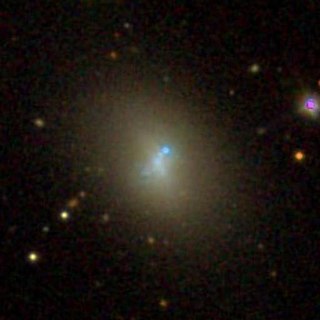
NGC 7077 is a lenticular blue compact dwarf galaxy located about 56 million light-years away from Earth in the constellation Aquarius. Discovered by astronomer Albert Marth on August 11, 1863, the galaxy lies within the Local Void.

NGC 7030 is a barred spiral galaxy located about 380 million light-years away in the constellation Capricornus. NGC 7030 has an estimated diameter of 133,510 light-years. NGC 7030 was discovered by astronomer Francis Preserved Leavenworth on September 3, 1885.
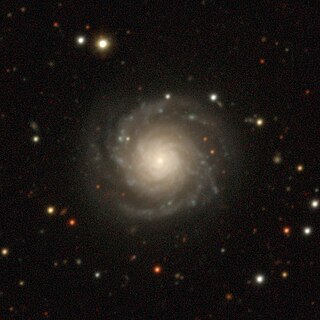
NGC 7032 is a spiral galaxy located about 140 million light-years away in the constellation Pavo. It has an estimated diameter of 71,370 light-years. NGC 7032 was discovered by astronomer John Herschel on July 20, 1835.

NGC 7038 is an intermediate spiral galaxy located about 210 million light-years away in the constellation of Indus. Astronomer John Herschel discovered NGC 7038 on September 30, 1834.

NGC 7040 is a spiral galaxy located about 260 million light-years away in the constellation of Equuleus. It has an estimated diameter of 42,600 light-years. NGC 7040 was discovered by astronomer Mark Harrington on August 18, 1882.

NGC 4612 is a barred lenticular galaxy located about 57 million light-years away in the constellation of Virgo. NGC 4612 was discovered by astronomer William Herschel on January 23, 1784. The galaxy is a member of the Virgo Cluster.
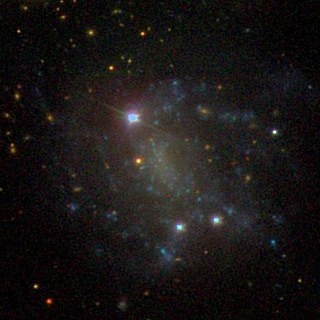
NGC 4523 is a Magellanic spiral galaxy located about 35 to 50 million light-years away in the constellation Coma Berenices. It was discovered by astronomer Heinrich d'Arrest on April 19, 1865. NGC 4523 is a member of the Virgo Cluster. A distance of for NGC 4523 was derived from using yellow supergiants in the galaxy as standard candles.

NGC 4886 is an elliptical galaxy located about 327 million light-years away in the constellation Coma Berenices. NGC 4886 was discovered by astronomer Heinrich d'Arrest on April 6, 1864. It was then rediscovered by d'Arrest on April 22, 1865, and was listed as NGC 4882. NGC 4886 is a member of the Coma Cluster.

NGC 2491 is a spiral galaxy located in Canis Minor constellation. It is located 580 million light-years from Earth and has an approximate diameter of 130,000 light-years.

NGC 2494 is a lenticular galaxy located in the Monoceros constellation. It is 183 million light-years away and about 58,000 light-years in diameter.




















